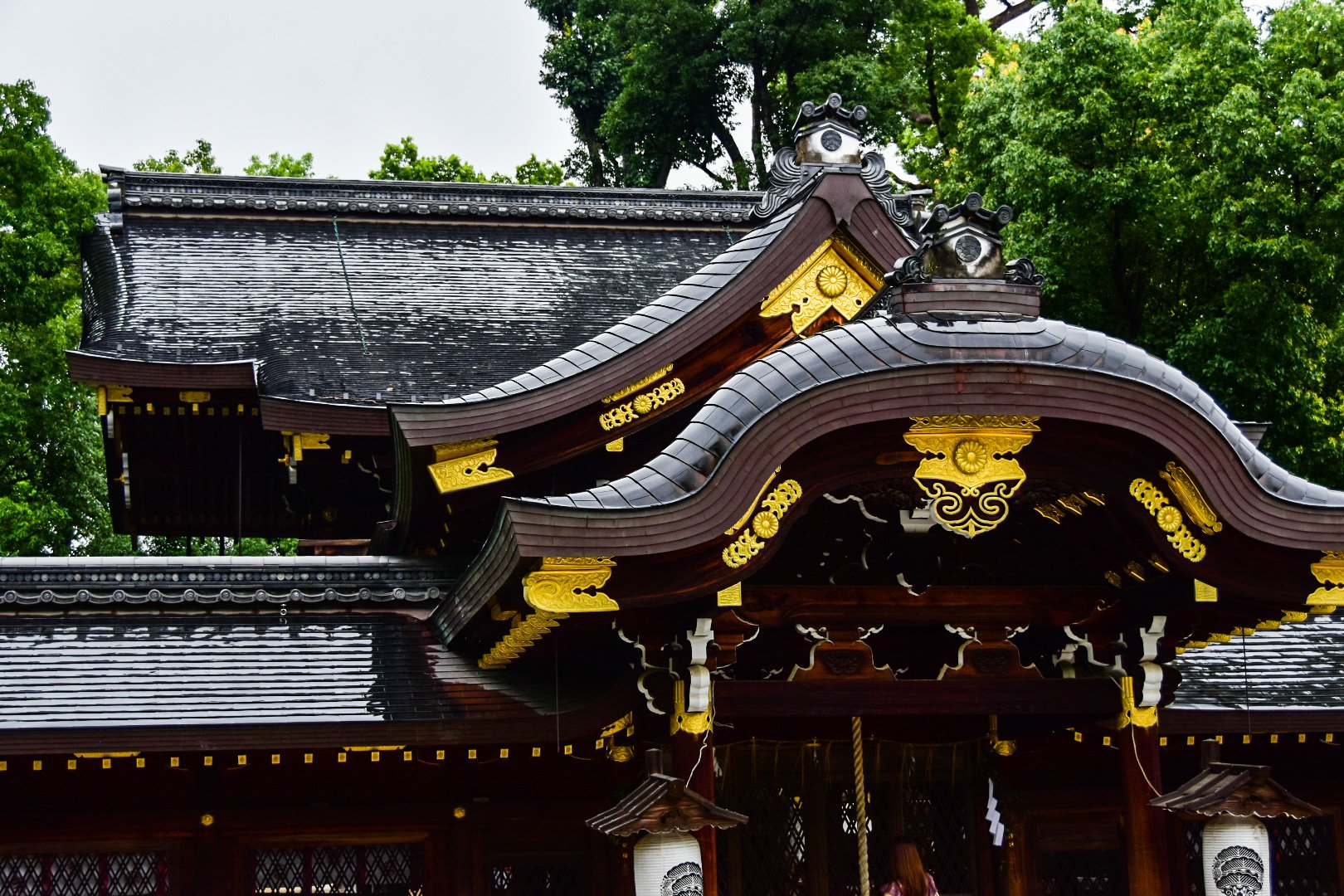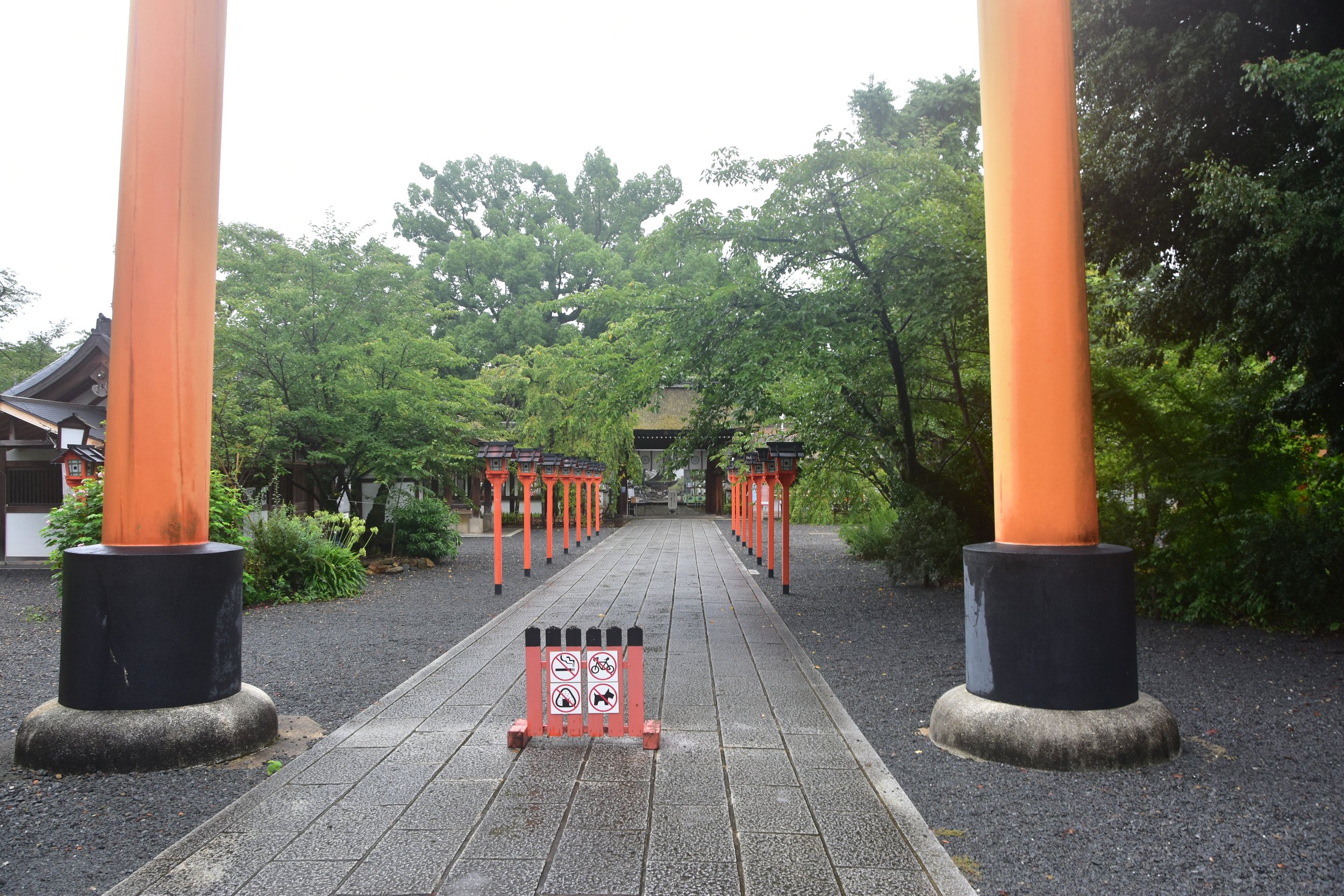Takeisao Jinja (Kenkun Jinja)
Takeisao Jinja, also known as Kenkun Jinja, is a shrine atop Funaoka-san in northern Kyoto. While it seemed to me like this shrine, like so many others in Kyoto, had been built centuries ago in days of antiquity and aristocracy, in actuality this shrine was built in 1869 at the command of Emperor Meiji. Even more surprising, it’s a shrine dedicated to none other than Oda Nobunaga, the first of the Three Great Unifiers of medieval Japan. Oda had been cremated at Daitokuji just north of the mountain and his spirit was going to be enshrined by Toyotomi Hideyoshi, but the shrine was never built until Emperor Meiji. Takeisao Jinja now serves the enshrined spirit of Oda Nobunaga as a deity of ambition and success, while also enshrining the Black Warrior, a mythical turtle with a snake for a tail. The Black Warrior is one of the four cardinal deities central to imperial city planning, personifying the auspicious mountains in the north that guard the emperor from attack (see my post in “Others” regarding Heijo-kyô).
For the educated: 6. For the casual: 4.
I really thought this shrine would be older, and was surprised when I read it wasn’t. Usually when a shrine is built on a bluff in a city, it’s usually to spot fires. Ok, onto the shrine itself.
This shrine is a lovely place to visit with lovely views and easy access. It really is just down the road from Kinkakuji. The layout itself is on the smaller size, and apart from praying there’s not much to do, but what I really enjoyed was the atmosphere. Healthy trees, nice views, and minimal disturbances left a very warm impression on me. This isn’t a shrine anyone needs to see, but considering it’s location it feels worth the effort the make the time if you’re in the area.












